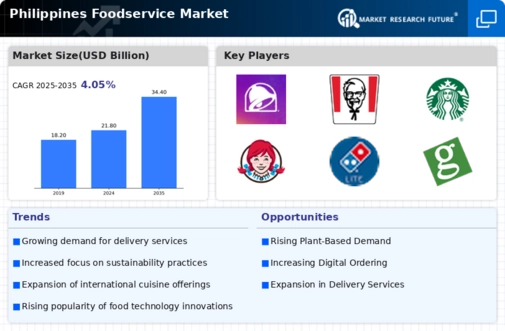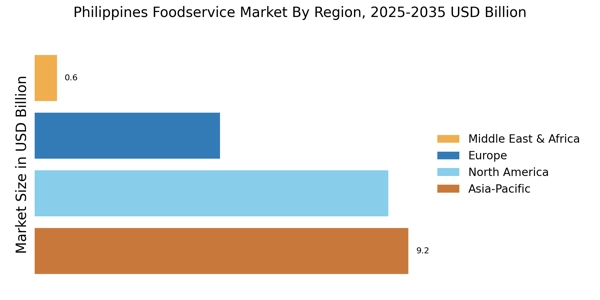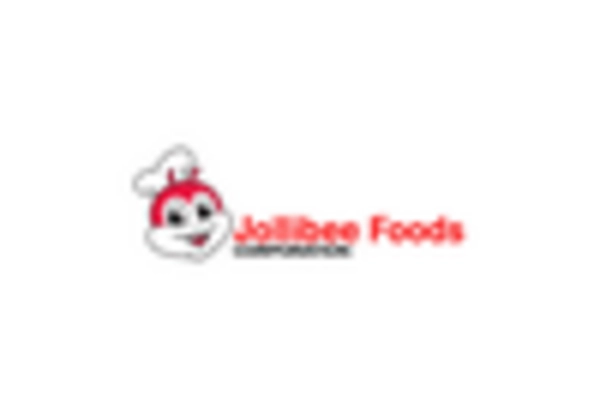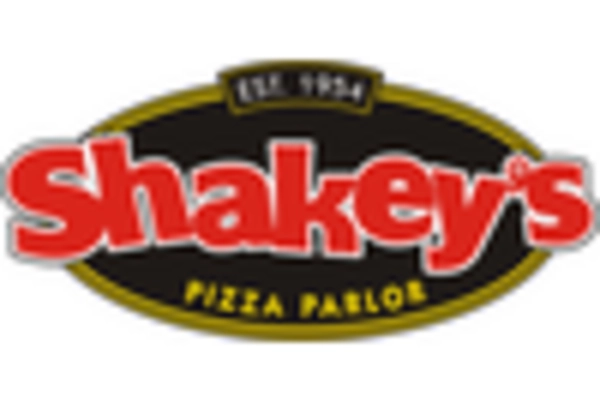The Philippines Foodservice Market is characterized by a dynamic competitive landscape, driven by evolving consumer preferences and a growing demand for diverse dining experiences. Key players such as Jollibee Foods Corporation (PH), Max's Group, Inc. (PH), and KFC Philippines (PH) are at the forefront, each adopting distinct strategies to enhance their market positioning. Jollibee Foods Corporation (PH) continues to innovate its menu offerings, focusing on local flavors while expanding its international footprint. Meanwhile, Max's Group, Inc. (PH) emphasizes a blend of traditional Filipino cuisine with modern dining experiences, aiming to attract both local and foreign customers. KFC Philippines (PH) is leveraging digital transformation to streamline operations and enhance customer engagement, indicating a shift towards technology-driven service models. Collectively, these strategies contribute to a competitive environment that is increasingly focused on customer-centricity and operational efficiency.
The business tactics employed by these companies reflect a nuanced understanding of the local market. Localizing manufacturing and optimizing supply chains are prevalent strategies, allowing companies to respond swiftly to consumer demands and reduce operational costs. The market structure appears moderately fragmented, with several players vying for market share, yet the influence of major brands remains substantial. This competitive structure fosters innovation and encourages smaller players to differentiate themselves through unique offerings and localized strategies.
In August 2025, Jollibee Foods Corporation (PH) announced the launch of a new line of plant-based products aimed at health-conscious consumers. This strategic move not only aligns with global trends towards sustainability but also positions Jollibee as a forward-thinking brand that caters to the evolving dietary preferences of its customer base. The introduction of these products could potentially attract a new demographic, enhancing brand loyalty and market share.
In September 2025, KFC Philippines (PH) unveiled a partnership with a local tech startup to develop an AI-driven ordering system. This initiative is significant as it reflects KFC's commitment to enhancing customer experience through technology. By streamlining the ordering process, KFC aims to reduce wait times and improve service efficiency, which may lead to increased customer satisfaction and repeat business.
In July 2025, Max's Group, Inc. (PH) expanded its delivery services by collaborating with a popular food delivery app, thereby increasing its reach to a broader audience. This strategic alliance is crucial in a market where convenience is paramount. By enhancing its delivery capabilities, Max's Group not only meets consumer demand for accessible dining options but also strengthens its competitive position against rivals who are also investing in delivery services.
As of October 2025, the competitive trends in the Philippines Foodservice Market are increasingly defined by digitalization, sustainability, and the integration of advanced technologies such as AI. Strategic alliances are becoming a cornerstone of competitive strategy, enabling companies to leverage each other's strengths and enhance service delivery. Looking ahead, it is likely that competitive differentiation will evolve from traditional price-based competition to a focus on innovation, technological integration, and supply chain reliability, as companies strive to meet the changing expectations of consumers.


















Leave a Comment